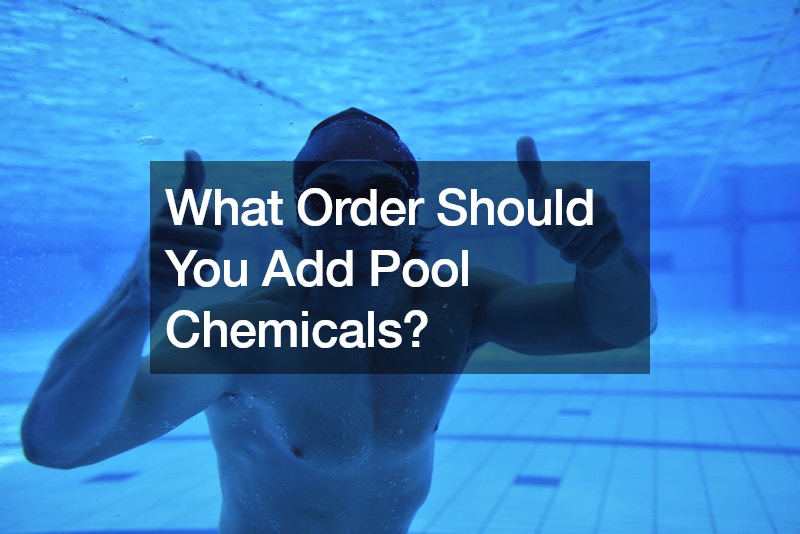

Common pool chemicals are a fact of life if you own a pool. However, there is a lot of confusion among pool owners about the best chemicals for pool care and the order in which they should be applied to the pool.

Pool contractors are a great resource for information. If you are struggling with what type of necessary pool chemicals you need for your specific location, a local contractor will have the answers. While there are some basic necessary chemicals for every pool, the area in which you live, weather patterns, the amount of sunlight, and more will affect the type, application, and amount of pool chemicals needed.

In other words, there are guidelines for what and how to apply chemicals to your pool, but they may need to be tweaked to suit your specific needs. Getting professional support can help you to better understand how to care for your pool correctly. Mistakes with pool chemicals over time can be costly.
Choosing the right chemicals and applying the right chemicals is essential to keep your pool water healthy. It will also ensure the longevity of the liner and pump systems. The right chemicals can help to reduce the amount of maintenance your pool will need.
Maintaining the proper chemical balance in your swimming pool is essential for water quality and swimmer safety. When adding pool chemicals, it’s important to follow a specific order to ensure effectiveness and avoid chemical reactions. Start by adjusting the pH level to the recommended range of 7.2 to 7.8 using pH increasers or decreasers as needed.
This step sets the foundation for proper water balance and enhances the effectiveness of other chemicals.
Once the pH is adjusted, add chlorine to sanitize the water and eliminate harmful bacteria and algae. Chlorine can be added in various forms such as liquid, granular, or tablets. After chlorine, address the total alkalinity (TA) of the pool water to stabilize the pH levels and prevent fluctuations. Adjust TA using alkalinity increasers or decreasers based on test results.
Furthermore, monitor and adjust the calcium hardness level to protect pool surfaces and equipment from corrosion. Regular testing and adjustment of chemical levels are vital aspects of swimming pool maintenance to ensure water clarity and safety for swimmers. Additionally, consider using specialty chemicals like algaecides or clarifiers to address specific water conditions and enhance overall pool maintenance.
By following the correct order and diligently maintaining chemical balance, you can keep your swimming pool clean, safe, and enjoyable for everyone to use. Regularly testing and adjusting chemical levels is a fundamental part of swimming pool maintenance, ensuring a healthy and inviting swimming environment.





More Stories
How Cycling Helps With Weight Loss
Your Basic Guide to Buying From a New Boat Sales Service
Where to Get Ski and Snowboard Rentals